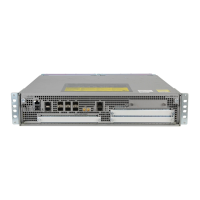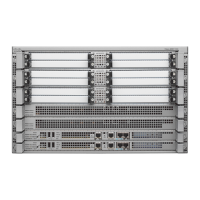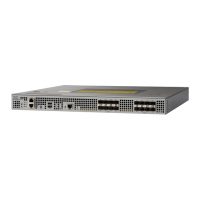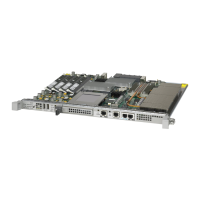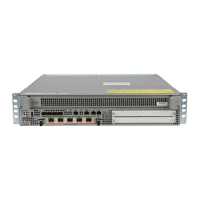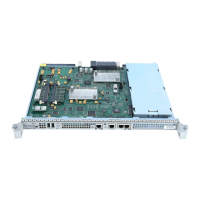7-20
Cisco ASR 1000 Series Aggregation Services Routers SIP and SPA Software Configuration Guide
OL-14127-08
Chapter 7 Configuring the ATM SPAs
Configuration Tasks
Configuring Virtual Circuit Classes
When multiple PVCs use the same or similar configurations, you can simplify the Cisco ASR 1000
Series Router’s configuration file by creating virtual circuit (VC) classes. Each VC class acts as a
template, which you can apply to an ATM subinterface, or to individual PVCs.
When you apply a VC class to an ATM subinterface, all PVCs created on that subinterface inherit the
VC class configuration. When you apply a VC class to an individual PVC, that particular PVC inherits
the class configuration.
You can then customize individual PVCs with further configuration commands. Any commands that you
apply to individual PVCs take precedence over those of the VC class that were applied to the interface
or to the PVC.
To create and configure a VC class, and then apply it to a subinterface or individual PVC, use the
following procedure beginning in global configuration mode:
Command or Action Purpose
Step 1
Router(config)# vc-class atm vc-class-name Creates an ATM virtual circuit (VC) class and enters
VC-class configuration mode.
• vc-class-name—Arbitrary name to identify this
particular VC class.
Step 2
Router(config-vc-class)# configuration-commands Enter any PVC configuration commands for this VC
class.
Step 3
Router(config-vc-class)# interface atm slot/subslot/port
or
Router(config-vc-class)# interface atm
slot/subslot/port.subinterface [multipoint | point-to-point]
Enters subinterface configuration mode for the
specified ATM subinterface.
Step 4
Router(config-if)# class-int vc-class-name
or
Router(config-subif)# class-int vc-class-name
(Optional) Applies a VC class on the ATM
subinterface. This class then applies to all PVCs that
are created on that interface.
• vc-class-name—Name of the VC class that was
created in Step 1.
Step 5
Router(config-if)# pvc [name] vpi/vci
or for a subinterface:
Router(config-subif)# pvc [name] vpi/vci
Specifies the PVC to be configured, and enters PVC
configuration mode, where:
• name—(Optional) An arbitrary string that
identifies this PVC.
• vpi—Specifies the VPI ID. The valid range is 0 to
255.
• vci—Specifies the VCI ID. The valid range is 32
to 65535. Values 1 to 31 are reserved and should
not be used, except for 5 for the QSAAL PVC
and 16 for the ILMI PVC. ILMI is unsupported
on the Cisco ASR 1000 Series Routers.
Note When using the pvc command, remember that the vpi/vci combination forms a unique identifier for the
interface and all of its subinterfaces. If you specify a vpi/vci combination that has been used on another
subinterface, the Cisco
IOS XE software assumes that you want to modify that PVC’s configuration and
automatically switches to its parent subinterface.
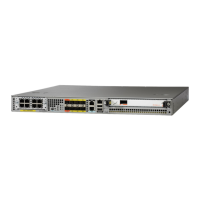
